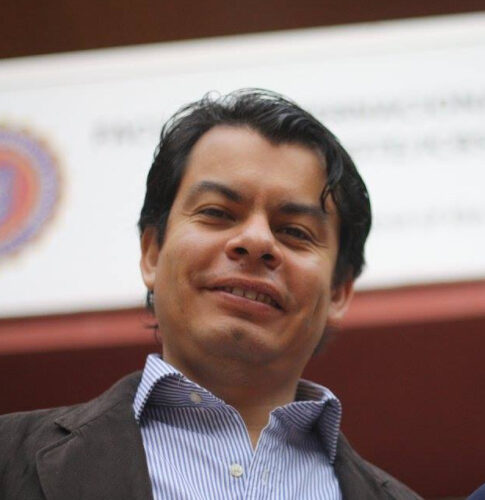The main purpose of conducting clinical trials in brain tumors is to achieve successful treatment and improve the patient’s quality of life.
- $What Are Brain Tumors?
- $What Groups of Brain Tumors Are There?
- $What Are the Main Brain Tumor Types in Adults?
- $Adult Population Affected by Gliomas in the United States
- $Adult Population Affected by Glioblastomas in the United States
- $Current Medical Need for Adult Patients with Gliomas and Glioblastomas
- $How Does Sofpromed Help Biotech Companies Conducting Clinical Trials in Brain Tumors?
- $Sofpromed Staff Oncology Experience in the United States
Unfortunately, however, the studies that have been carried out so far to treat the most aggressive brain tumors in adults —glioma and glioblastoma— are still at an early stage.
Although cancer care has improved over time, the need for advanced treatments for adults with brain tumors has become more apparent.
According to the Central Brain Tumor Registry of the United States (CBTRUS), survival rates for some types of brain tumors can vary greatly by age, with younger people often having better prospects than older people. [1]
In this article we will focus on brain tumors, particularly glioma and glioblastoma in adults, as well as current therapies used to treat these oncologic diseases.
What Are Brain Tumors?
Brain tumors are abnormal lumps of tissue in the brain in which cells grow and increase uncontrollably without the mechanisms that regulate normal cells.
Unlike other tumors, brain tumors do not metastasize, which means that these cells rarely spread outside the brain. The lumps or masses of tissue can contain cancer cells or harmless cells.
Before going into the main types of brain tumors, it is useful to understand what is meant by a benign brain tumor and a malignant brain tumor.
Benign brain tumors are masses of normal, non-cancerous cells with well-defined borders that, depending on their location, can interfere with the proper functioning of the nervous system. In this case, they can cause pain, brain damage, or even death.
On the other hand, a malignant brain tumor is a lump of cancerous cells with irregular borders that tend to grow rapidly, increasing the pressure inside the brain (IICP), and may spread in the brain or spinal cord beyond the point where they originate. [2]
Nevertheless, according to the American Cancer Society, although brain tumors do not spread to other organs, they are rarely benign.
In the following section, we will expand on this topic by outlining the different groups of brain tumors. [3]
What Groups of Brain Tumors Are There?
Scientists have identified two main groups of brain tumors: primary (or spinal cord) and secondary (or metastatic) brain tumors.
Classified as glial or non-glial (the latter including nerves, blood vessels, and glands), primary brain tumors originate in the brain and can be benign or malignant. This type of brain tumor causes 2.5% of all cancer deaths.
By contrast, secondary or metastatic brain tumors are extensions of cancer cells that migrate to the brain through the bloodstream from cancers of other organs, usually cancer of the lungs, breast, colon, liver, skin, nose, or throat. [4]
In addition, there are different types of primary and secondary brain tumors depending on the cells involved and the types affecting most adults, which will be the next issue we will focus on.
What Are the Main Brain Tumor Types in Adults?
There are at least 150 types of brain tumors which, in turn, can be benign or malignant. Unfortunately, 78% of brain tumors in adults are of the primary, malignant type: glioma.
Glioma
Before defining glioma, it is important to understand what ‘glia’ means. According to neuro-oncologist Ashley Aaroe, MD, glial cells surround the nerve endings of the brain. ‘Glial’ means ‘glue’, as they are a sort of assistants that support neurons, which enable walking, talking, thinking, seeing, and other functionalities. [5]
Glioma brain tumors arise from the supporting cells of the brain, called ‘glia’, which are classified into astrocytes, ependymal cells, and oligodendroglial cells. [6]
A glioma can also be categorized from grade I to IV, depending on its severity, with grade IV being the most aggressive.
Glioblastoma
In this sense, a glioma-type brain tumor may be caused by one or several of these cells. The most invasive grade IV glioma is produced by astrocytes and oligodendroglial cells, which form the most invasive glial brain tumor: glioblastoma.
As a malignant tumor, glioblastoma grows rapidly and spreads to other tissues. Glioblastoma multiforme (GBM) affects people between the ages of 50 and 70, with men being more vulnerable to this type of tumor, according to the American Association of Neurological Surgeons. [7]
Adult Population Affected by Gliomas in the United States
The National Library of Medicine explains in an article on demographic variation in the frequency of gliomas in Florida (USA) that glial brain cancers affect approximately 20,000 individuals in the United States each year. [8]
Furthermore, brain gliomas occur more frequently in Caucasian men, which is consistent with preliminary studies using national databases (SEER), showing an increased probability of glioma diagnosis in older white men than in adult women.
Adult Population Affected by Glioblastomas in the United States
Similarly, glioblastoma multiforme (GBM), which is the most aggressive malignant primary brain tumor, as discussed above, has an incidence rate of 3.19 per 100,000 people in the United States, and a median age of 64, being rare in children, as mentioned by Dr. Ahmad Faleh Tamimi in the National Library of Medicine.
Nonetheless, the author and his co-author point out that, although the incidence increases with age, it decreases after the age of 85. In addition, primary GBM is diagnosed more at the median age of 55, while secondary GBM is commonly diagnosed at the age of 40. [7]
Current Medical Need for Adult Patients with Gliomas and Glioblastomas
The great problem is that adult patients have little chance of living longer after receiving the treatments that have been developed so far.
Therefore, the need for patients diagnosed with glioma and glioblastoma in order to continue research to find new treatments that can increase life expectancy after therapy is pressing.
According to the American Cancer Society, only 9% of patients aged 45-54 and 6% of patients aged 55-64 with glioblastoma survive an average of 5 years after treatment. This is the lowest level of survival among all brain tumor types. [9] It is also worth mentioning that, after diagnosis, the median survival is 1 year.
Hence, the treatment of gliomas and glioblastomas has a long way to go. For example: after surgery, a patient with a high-grade glioma has a median survival time of only 12 to 15 months for glioblastoma, and 2 to 5 years in the case of an anaplastic glioma.
One of the reasons why clinical researchers have not been able to make adequate progress with effective treatments is the lack of patients with gliomas and glioblastomas for clinical trials, as the prognosis of these tumors is difficult to detect and adults rarely present with favorable molecular features. [10]
The following are the current treatments that have been developed to treat gliomas and glioblastomas.
Surgery
Although the standard treatment for high-grade gliomas is a multidisciplinary treatment, surgical treatment is still a predominant method. Certainly, total surgical resection is essential to prolong patient survival.
The aim of surgery is to obtain the maximum safe resection, take a tissue sample for pathological diagnosis, improve conditions for further treatment, delay clinical regression, and improve quality of life.
Chemotherapy and Radiotherapy
After surgical resection, treatment consists of administering an oral chemotherapeutic drug, temozolomide (TMZ), in combination with radiotherapy (RT), and then maintenance courses of TMZ.
In the United States, temozolomide is indicated for the treatment of adults with newly diagnosed glioblastoma multiforme in conjunction with radiotherapy and subsequently as monotherapy treatment.
Evidence suggests that chemotherapy with TMZ is associated with few adverse events; the risk of hematologic complications, fatigue, and infections increases with its use.
Chemotherapy and radiotherapy are considered complementary treatments to surgery, which go hand in hand, depending on each individual case. Indeed, chemotherapy is part of the multidisciplinary treatment of gliomas, with better survival observed when associated with radiotherapy.
Glialel (Carmustine) Implantable Wafers
Another adjunctive treatment is the implantable wafers. The FDA has approved the use of biodegradable carmustine wafers implanted in the tumor bed after partial or complete tumor resection for first-line treatment of GBM and anaplastic glioma. However, their use is still questionable as they may decrease survival and cause possible adverse effects.
In addition, the FDA has also approved the use of bevacizumab which, in combination with RT – TMZ, can treat GBM, showing good results. But this medical care is not so satisfactory since there has been an increase in adverse events associated with bevacizumab therapy. [11]
How Does Sofpromed Help Biotech Companies Conducting Clinical Trials in Brain Tumors?
Working with a CRO specialized in brain tumors is one of the key factors underlying the success of a clinical trial in these cancers.
This CRO should provide a professional infrastructure in order to conduct carefully controlled research studies, which will facilitate the attainment of a promising new drug, procedure, approach, or therapy for brain tumors.
Sofpromed is an oncology-focused CRO that provides the full spectrum of services needed in brain tumor trials.
Thanks to our deep knowledge of brain cancers, including glioma and glioblastoma, expertise, and devoted commitment to offer services and tools of high technical innovation, we can help biotech companies achieve their research objectives and streamline the execution of phase I to IV clinical trials.
Our list of CRO services includes clinical operations, biometrics, medical monitoring, and pharmacovigilance.
Clinical Operations
These services bring together all specialists responsible for the design, planning, and physical execution of the clinical trial. Therefore, the teams are cross-functional and belong to different departments, which respectively must coordinate with the appropriate department for accurate remote or onsite monitoring.
Biometrics
Data collection and analysis must be performed correctly to program statistics in an accurate manner. As part of this process, it is paramount to properly standardize and transfer clinical trial data. Sofpromed offers a team of biostatisticians, statistical programmers, data managers, and other experts in the use of technology platforms to help you understand the data and have the ability to make major study decisions.
Medical Monitoring
For each specific clinical trial, we select an expert medical team specialized in oncology to monitor patient safety and provide support for clinical questions related to the protocol.
Pharmacovigilance
We also deal with drug safety, i.e., we help monitor the collection, detection, evaluation, follow-up, and prevention of adverse effects of the drug or treatment under clinical study. As such, in pharmacovigilance we focus on patients’ responses to the drug and the correct dosage, while always understanding the personal conditions of each patient.
Sofpromed Staff Oncology Experience in the United States
Sofpromed has more than 10 years of experience in managing clinical trials in oncology.
Our senior management personnel are fully qualified and certified as clinical research associates (CRAs), clinical project managers, statistical programmers, data managers, and many other professionals specialized in oncology.
All of them have given support to biotech and pharma companies conducting clinical research studies in brain cancers.
We are a fast-growing company with great experience in managing clinical trials internationally. In fact, an increasing number of biotech companies located in Europe, Asia, as well as in the United States, rely on the quality of our services.
References:
[1 and 3] Survival Rates for Selected Adult Brain and Spinal Cord Tumors (cancer.org)
[2 and 4] Brain tumor | definition of brain tumor by Medical dictionary (thefreedictionary.com)
[5] Glioma vs. glioblastoma: What’s the difference? | MD Anderson Cancer Center
[6] Brain Tumors – Classifications, Symptoms, Diagnosis and Treatments (aans.org)
[7] Brain Tumors – Types of Brain Tumors (aans.org)
[8] Demographic Variation in the Frequency of Gliomas in Florida (NCBI Bookshelf (nih.gov)
[9] Epidemiology and Outcome of Glioblastoma – Glioblastoma – NCBI Bookshelf (nih.gov)
[10 and 12] Current Standards of Care in Glioblastoma Therapy – Glioblastoma – NCBI Bookshelf (nih.gov)









